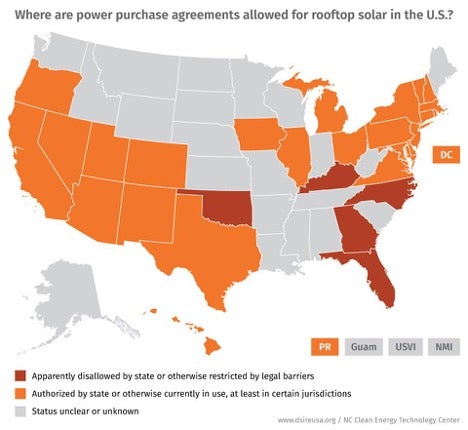Solar Financing
How can I finance my solar installation?
From the first day you turn on your solar system, your energy bills will go down. How much money you save and how quickly depends on a few factors: how your system is financed, and how you are credited for the energy your solar panels generate.
Direct solar ownership
Many solar owners choose to pay for their systems outright or with a personal or business loan. Loans are available up to 20 years in length. Most are unsecured (meaning they don’t require collateral) and rarely have penalties for early repayment. The savings you generate on your electricity bill from solar may equal or exceed the amount you are paying on your loan. So, even with a loan, you could be saving money from day one.
The most attractive loan is often a home equity line of credit (HELOC). These leverage the value of your home to improve it with the installation of a renewable energy system. Even with recent changes to the federal tax code, interest on HELOC loans used to buy, build, or improve the borrower’s home can be tax deductible.
Benefits of direct ownership
With direct ownership, you can claim tax credits and other incentives for solar, and you retain the rights to any solar renewable energy certificates (SRECs) your system generates. If you live in a state with an SREC market, this can be a significant source of additional revenue from your solar installation.
(Our advice here is for informational purposes only. Consult your accountant and/or a tax attorney to determine how to properly take advantage of solar tax credits.)
Third-party solar ownership
In some states, property owners can purchase the electricity produced by a solar array without owning the system itself. In those states, you can use renewable energy and save money, while avoiding the up-front expense of installing and owning a solar array outright. Solar panels are installed on your home, but they are owned by the installer, who is responsible for system performance and maintenance. As a customer, you take advantage of cheaper electricity costs provided by solar.
There are two main types of third-party solar ownership: Under a power purchase agreement (PPA), the customer agrees to purchase the power generated by the panels, while under a solar lease, the customer pays a fixed, monthly fee.

What about the rest of my energy bill?
With a PPA or lease, you will generally have two electric bills: one from your solar company for the electricity produced by the panels, and one from your utility company for any electricity you consume from the grid when your panels don’t produce enough electricity to cover your needs.
Unfortunately, not every state allows third-party ownership. One of our priorities at Solar United Neighbors is to change that.

